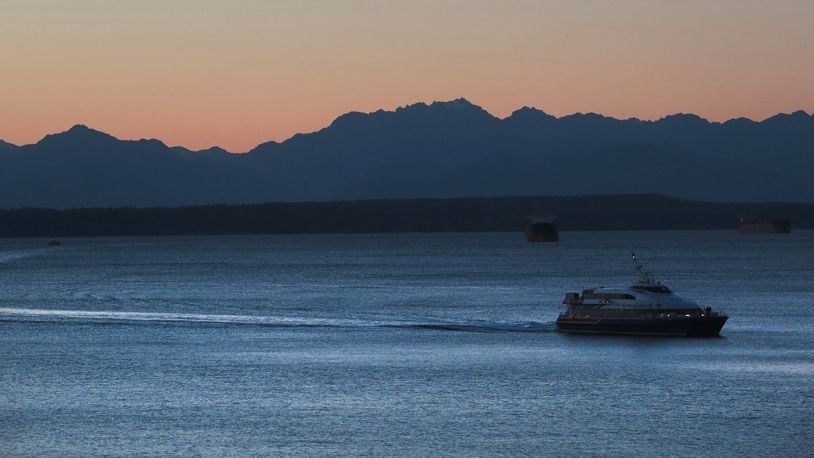We knew a storm was rolling in, but our boat would leave Seattle’s Pier 69 first thing in the morning, and the weather would arrive later in the afternoon, adding some snowy ambience to our strolls through the adorable town that is Victoria. We’d bundle up in our hats and scarves, sip some tea and wine and be on our merry way.
What’s that they say about the best-laid plans?
They went awry all right.
The trip began just fine; every once in a while there would be a big wave, and the whole boat would sound like it was going over the edge of a roller coaster. We were having a great time.
Until we weren’t.
About an hour in, the waves took over. When one would hit, the boat would go up and over, slamming down back onto the water, hurling people around in their seats. It was jarring, and loud.
Unfortunately, we had landed ourselves on what Clipper spokesperson Scott Meis called “the worst crossing we have had in 31 years of operation between Seattle.” Crossings are canceled due to weather on average 20-25 times per year, Meis said, after careful calculations of weather patterns early in the morning. But that storm that was coming? It hit early, and it hit fast.
“Mother Nature can change quickly as can weather in the Strait of Juan de Fuca,” Meis said.
The captain of the boat had to make the decision: would it be safer to turn back or proceed? Proceed we did.
It didn’t take long for the seasickness to spread throughout the boat. Even the biggest, strongest passengers — hopped up on the Clipper’s complimentary ginger candies and motion-sickness medication — were no match for these waves.
The heroic Clipper staff crawled through the aisles on their knees, handing out and retrieving vomit bag after vomit bag. There’s something really special about the smell of hundreds of sweaty, anxious, vomiting people on a boat.
It wasn’t until a wave hit so hard that a window popped open a bit and some water splashed into the cabin that I started to feel unsafe. A woman screamed. Another put on her life vest.
Only then did a staff member come onto the loud speaker, apologetically announcing that we had more bad weather to get through, that they had expected us to get there before the storm, and that we were in no danger.
We are in no danger. OK. I just have to keep myself from getting ill and let them get us there safely.
Let them drive the boat.
Eventually, we pulled up to the dock in Victoria. We disembarked, exhausted and unable to stop laughing anxiously.
Of the five of us, the two who were least prone to seasickness were the ones who tossed their cookies. The rest of us were so proud we had made it through we continued to brag about it for days.
We had made plans for all sorts of activities when we got to town — bars, restaurants, the Royal BC Museum, maybe even a chilly trip to the Butchart Gardens. Instead, all we wanted to do was hunker down in our Airbnb with wine and a home-cooked meal.
We ate, we drank, we talked, we played games — and we made way too many Clipper survivor jokes. We bonded. Nothing like a rendezvous with an angry Mother Nature to bring you closer together.
Cheers to my beloved Clipper survivors; I’m booking next February’s trip as we speak.
About the Author
